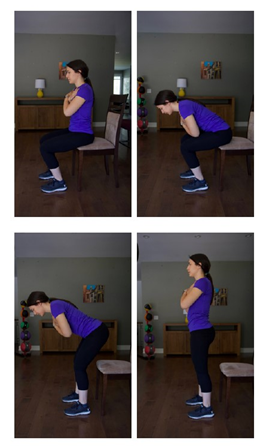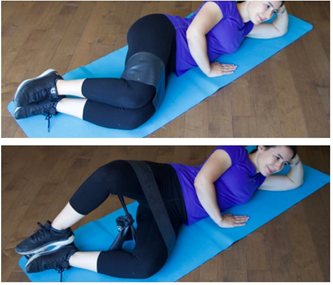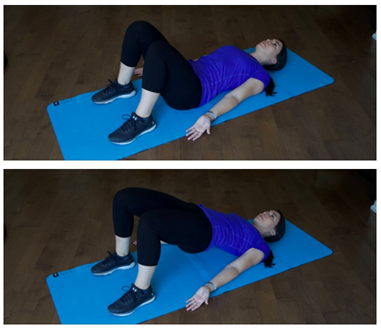by Julie Lopez from Willkin
Living through breast cancer is a challenging journey. You will be searching for answers and information about the disease and its treatment; trying to understand how to live positively, and simply reckoning with what your future may look like.
Whether it is your first cancer diagnosis, you are currently in breast cancer treatment, living with breast cancer or “cancer free” and in remission, emotions are high and living positively becomes vital and important to get through your day.
Is It Safe to Exercise If I'm Living with Breast Cancer?
Remaining socially engaged and physically active will help you wherever you are in your journey. Safe and effective exercise is not only recommended but important to continue, but the anxiety around what you are experiencing as well as misinformation on exercise can make it difficult to know what to do, how to do it and who to turn to for help.
For some, exercise has previously been categorized as a chore, challenging and unattainable. For those that are new to exercise, it can be difficult to figure out how to get started and incorporate exercise into your life. But let’s remember exercise is physical activity and can adopt varied forms… many enjoyable. It’s about taking the step.
The good news is that exercise can help with the short and long-term side effects of breast cancer and subsequent treatment. The sooner you engage into an exercise program, the easier it is to maintain. If implemented correctly it can be easy to incorporate exercise to help manage your body, your mind, and your spirit. Simply put… we were meant to be active and it makes you feel better. It’s a natural coping mechanism.
What Are the Benefits of Exercise for Someone Living with Breast Cancer?
The debilitating effects of breast cancer and its treatment can impact all aspects of life, including strength, balance, concentration, and the ability to endure the normal everyday tasks which can also impact readiness to return to work. In the past, women receiving treatment were advised to rest and avoid physical activity.
However, we now know that the previous (mis)advice will reduce a woman's level of physical fitness, lead to muscle wasting and can limit activities of daily living. With current research, it has been concluded that exercise is safe during and after all breast cancer treatments. Exercise while receiving adjunct treatment for breast cancer can help lessen fatigue and improve physical fitness.
Exercise Has Been Proven to Improve Strength
Strength is the body's ability to hold itself up and perform daily activities with ease, even the ones that may be more challenging than others. There are going to be times throughout this journey that your body feels weak and tired and that’s okay. Your body is doing its job to fight through a difficult situation.
With strength exercises, we teach our bodies how our muscles should feel, how to use them to complete daily tasks and to continually maintain (or improve) our performance. We create a basis for our bodies to grow and recover with greater ease. Some examples of some exercises to get you started from Willkin’s team are:
Standing up and down from a chair

Clam shell

Hip bridge

Curl

Exercise Has Been Proven to Improve Body Awareness, Proprioception and Balance
When we strengthen the body, it becomes more aware of how it can perform. Exercise will teach you the movement patterns you can do and how to achieve ones you may not have realized. Throughout the cancer journey, exercise and activity can show you how your body can move well and what your limitations are.
This can provide insight into what your body needs to feel strong and increase your energy. Post treatment, this body awareness is key to build up strength and movement tolerances to reduce the impact of possible side effects. Exercise can also help identify your parameters, i.e., when you should take a step back with some lighter activities or rest.
With body awareness, you can recognize how your body should feel and identify the tools you need to recover faster. You can become ‘in tune’ with your body. Some examples of how you can evaluate or identify improvements in your body awareness are:
- Getting up and down from a chair with ease
- Walking up and down stairs - do you feel fatigued, winded or muscle soreness?
- Grabbing dishes off a shelf – how does your grip feel, how much weight can you sustain, how do your neck and shoulders feel?
- Walking to and from different areas of the house - how does your walking feel? Does it feel stable? Shaky?
Exercise Has Been Proven to Improve Endurance
Endurance is the body’s ability to sustain activities for a period of time. When you move, you train your body to keep moving. The more you move, the longer you can move for and the better your body gets at moving for longer periods of time. Now, this won’t feel like the case every day. Some days you may have setbacks or fatigue, and that’s okay. It’s important to understand that progress isn’t getting better every day but maintaining an upward ‘trend’, accumulating the strength you gain and consistency you can maintain.
You can evaluate and improve endurance as simply as walking and identifying how much you can tolerate. Gain consistency first and progress from there.
Can Supervised Exercise Help Me as I Live with Breast Cancer?
It is recommended to seek guided exercise programming and education to ensure you perform all exercises safely and correctly, as well as work with a professional who understands how you feel. Although these exercises can be performed to fatigue, this level can fluctuate throughout treatment. Based on activity guidelines, it is recommended to engage in strength related activity twice a week to reduce the risk of muscle wasting and improve your body’s ability to continue to function optimally.
Can I Exercise with Lymphedema?
With a properly and safely supervised and prescribed exercise program, those with breast cancer related lymphedema, can safely participate without experiencing a worsening of lymphedema or related symptoms. There was a history of recommendation to refrain from exercise to avoid lymphedema exacerbations. However, it has been observed that resistance exercises with breast cancer related lymphedema does not have a negative effect and is considered a manageable treatment.
Exercising helps muscles pump blood and encourage circulation. Since the lymphatic vessels are between the muscles and the skin, this activity of the muscles aids to push the lymph fluid where it needs to go.
We want to provide you with options, support and reduce the risk of developing or aggravating lymphedema. This can be done through giving you tools to ensure you’re engaging in the right exercise and carrying out your daily living, safely. In addition to improving your overall health, fitness, strength independence and confidence to achieve a positive mindset.
Where Can I Find A Specialist Exercise Professional?
Willkin Health understands the patient’s journey from diagnosis of breast cancer, through treatment and beyond, with all the unique and complex physical and mental challenges faced by cancer survivors. We understand how hard it can be to feel motivated, to feel strong and to know what to do every day. Willkin has developed chronic health programs which combine thoughtful exercise prescription, education, and behavior change, to enhance the wellbeing and self-management of you and your loved ones. We want to redefine what exercise means from a chore to empowerment and strength.
Our 12-week program takes you through guided and supervised exercises either virtually (priced at $600 plus tax) or in person facilitated by an experienced Kinesiologist in breast cancer. This program combines exercise, education, and motivation components to aid in a positive lifestyle while incorporating exercise into your daily routine.
We provide you with the ability to take control of your life and maintain consistency in movement, relaxation techniques for anxiety as well as education for lifestyle management. Whether you may be in treatment or in remission, support and exercise can help. With our program and supervised activity, we can help you gain access to self- directed care and wellness that can result in feeling more in control, confident and independent.
At Willkin our well thought out prescription of exercises and behavior change education will enhance your wellbeing. The program’s tools and protocols are carefully structured to carry out safe and effective sessions to meet each person’s needs. We recognize that incorporating long lasting self-management strategies can be a challenge and we have developed a program to make it easier for you to get the support you need to make lasting changes no matter where you are in your journey.
To discover how Willkin can help you on your journey, you can set up a call or send us an email to julie@willkin.ca
Photo by Juliane Liebermann on Unsplash







